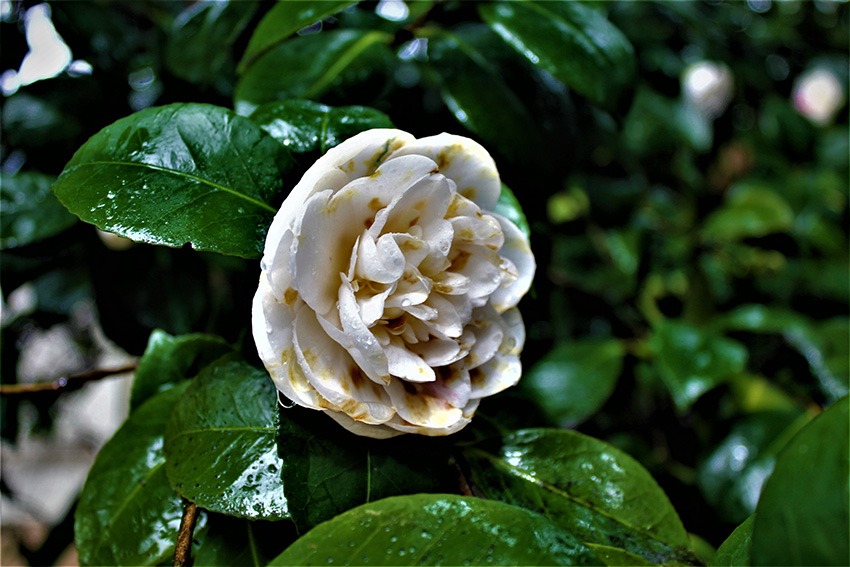Camellia Petal Blight, Ciborinia camelliae, is a common fungus disease of camellias.

The disease first appears within 24 hours of infection.
by John Bagnasco
It emerges as small, water-soaked spots or small areas in the flower center. The veins, which usually are darker than the surrounding tissues, often give the blooms a distinguishing netted appearance. These spots quickly increase in size until the entire bloom turns a dull brown. Blighted petals are dry or leathery but do not crumble when handled. Once the blooms are killed, they will fall intact to the ground.
Here the cycle begins anew. Small black bodies, called sclerotia are usually seen on the decaying petals after they fall to the ground. The following winter, some sclerotia produce a small, mushroom-like structure, called an apothecia, while others remain dormant for up to 5 years. Spores, which are released by the apothecia, are spread to camellia flower buds by wind currents, germinate under favorable weather conditions, and rapidly infect the petals.
Prevention is the best control. Do not add camellia petals or leaves to mulch that will be used around camellia, even if it has been composted. Each year, when blossoms are no longer present, apply a fresh layer of pathogen-free organic mulch and maintain a 4-inch layer of organic mulch beneath and somewhat beyond plants to suppress pathogen spore production. Remove fallen petals and other camellia debris before applying fresh mulch, but otherwise avoid moving or disturbing existing mulch where fungi may be present. Keep mulch thin near the trunk or several inches away from the trunk.
